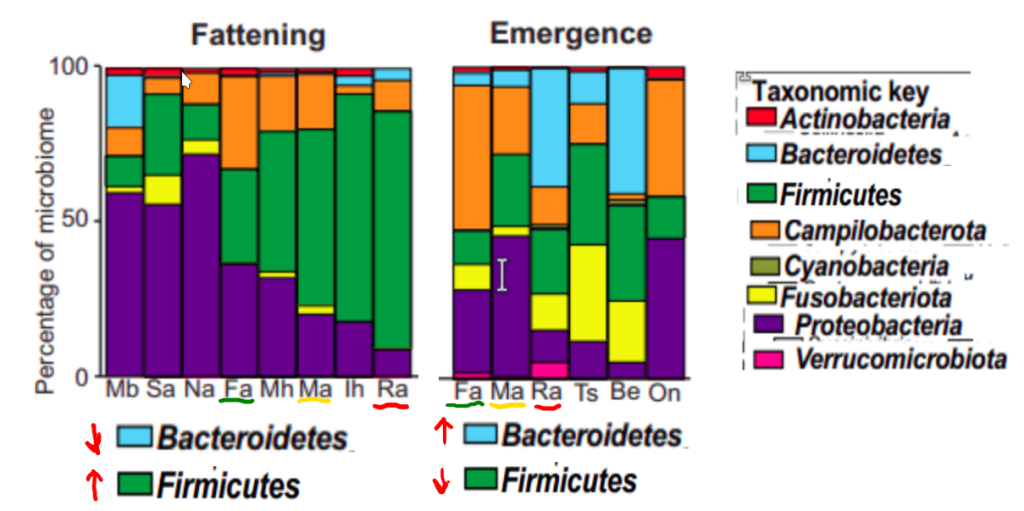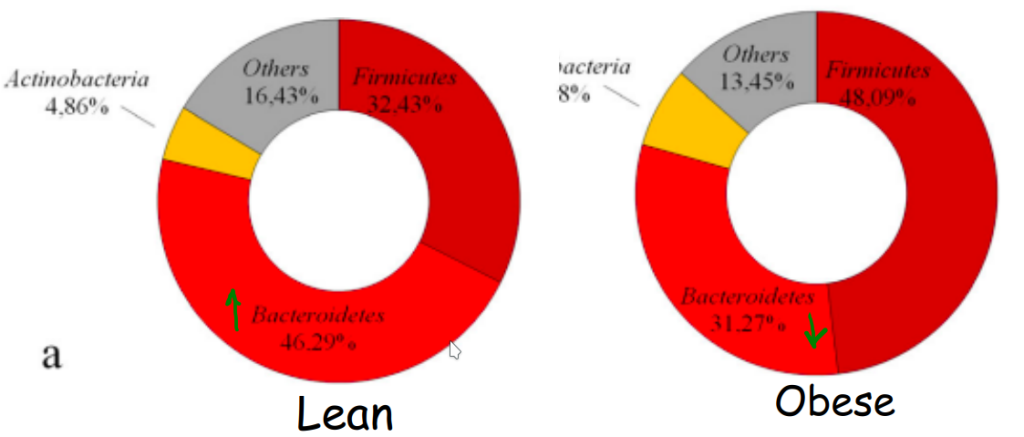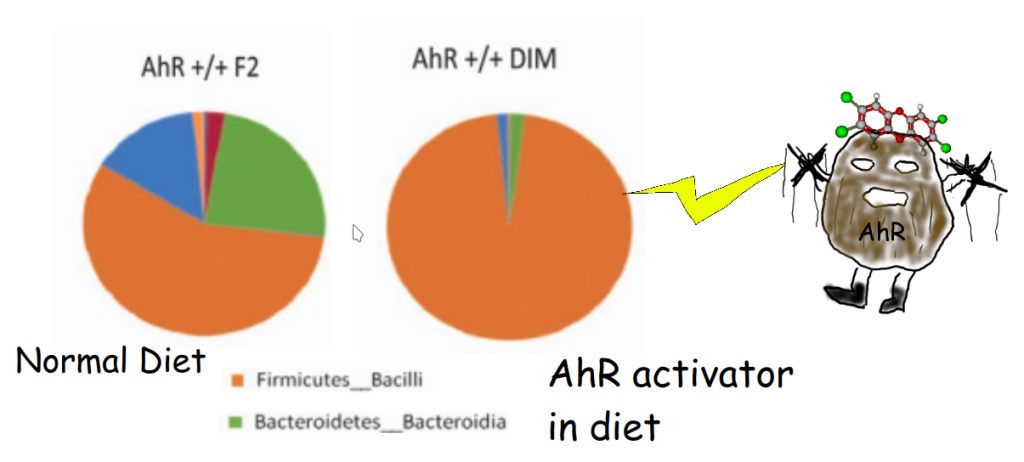People think about the gut microbiome as something that is passively managed. Eat some fiber and pro-biotics and hopefully it will grow and bloom.
Whose microbiome is it anyway? Obesity Explained, Episode 5.
Watch the video version below if you prefer:
Hibernators adjust their microbiome to fatten
In the case of hibernating mammals, it is their biological imperative that they shift their microbiome in a way that allows them to fatten up for winter. They shift their microbiome in a way that minimizes diversity and that favors the firmicutes clan over the bacteroidetes clan. The following paper looked at dwarf lemurs. (Greene, 2022) These lemurs are tropical primates – the closest related mammals to us that are known to hibernate. The researchers actually captured the lemurs during the fattening season and again in the spring period when they are most active.
OK, well not actually spring since they’re tropical. It was actually after the dry season ended and they went about their business of leaning out and mating, etc. Lets think of it as spring.
The lemurs totally shift their microbiome between the lean season (emergence) and the fattening season. In the fattening season, diversity declines and firmicutes are favored over bacteriodetes.

The microbiome of obese humans mirrors that of fattening hibernators
This matches the types of bacteria seen in many obese human populations around the world. Consider this study from the Ukraine. (Koliada, 2017) The lean humans (BMI less than 18.5) have less bacteriodetes and more firmicutes than the obese humans (BMI>30). Just like the fattening lemurs.

The AhR actively manages the microbiome for fattening
If you were a hibernator, your biological imperative is to fatten for “winter”. (In the lemur case it’s for the dry season.) Would you take chances on whether your microbiome shifted to a fattening state?
You would actively manage it. I have made the argument that the aryl hydrocarbon receptor is the master regulator of fattening/torpor/hibernation. When the AhR is activated, it actively manages the gut microbiome to favor a fattening state: more firmicutes, less of everything else. (Korecka, 2016) Perhaps it does this by simply allowing the overgrowth of firmicutes.

Active vs. Passive Control of the microbiome
It is plausible that passive approaches at managing the microbiome – dietary fiber, pre-biotics, pro-biotics, etc. – could help control obesity. But the AhR is actively pushing you into a fattening state. Would you take pro-biotics and an antibiotic at the same time? No, you’d wait until the antibiotics were over and THEN you’d take the pro-biotic.
I suspect the case of the AhR works like this. The first step is to get the AhR in check. THEN you can think about pro-biotics and pre-biotics.
Fling, R. R., & Zacharewski, T. R. (2021). Aryl Hydrocarbon Receptor (AhR) Activation by 2,3,7,8-Tetrachlorodibenzo-p-Dioxin (TCDD) Dose-Dependently Shifts the Gut Microbiome Consistent with the Progression of Non-Alcoholic Fatty Liver Disease. In International Journal of Molecular Sciences (Vol. 22, Issue 22, p. 12431). MDPI AG. https://doi.org/10.3390/ijms222212431
Greene, L. K., Andriambeloson, J.-B., Rasoanaivo, H. A., Yoder, A. D., & Blanco, M. B. (2022). Variation in gut microbiome structure across the annual hibernation cycle in a wild primate. In FEMS Microbiology Ecology (Vol. 98, Issue 7). Oxford University Press (OUP). https://doi.org/10.1093/femsec/fiac070
Ji, Y., Kim, H., Park, H., Lee, J., Yeo, S., Yang, J., Park, S., Yoon, H., Cho, G., Franz, C., Bomba, A., Shin, H., & Holzapfel, W. (2012). Modulation of the murine microbiome with a concomitant anti-obesity effect by Lactobacillus rhamnosus GG and Lactobacillus sakei NR28. In Beneficial Microbes (Vol. 3, Issue 1, pp. 13–22). Wageningen Academic Publishers. https://doi.org/10.3920/bm2011.0046
Kasai, C., Sugimoto, K., Moritani, I., Tanaka, J., Oya, Y., Inoue, H., Tameda, M., Shiraki, K., Ito, M., Takei, Y., & Takase, K. (2015). Comparison of the gut microbiota composition between obese and non-obese individuals in a Japanese population, as analyzed by terminal restriction fragment length polymorphism and next-generation sequencing. In BMC Gastroenterology (Vol. 15, Issue 1). Springer Science and Business Media LLC. https://doi.org/10.1186/s12876-015-0330-2
Koliada, A., Syzenko, G., Moseiko, V., Budovska, L., Puchkov, K., Perederiy, V., Gavalko, Y., Dorofeyev, A., Romanenko, M., Tkach, S., Sineok, L., Lushchak, O., & Vaiserman, A. (2017). Association between body mass index and Firmicutes/Bacteroidetes ratio in an adult Ukrainian population. In BMC Microbiology (Vol. 17, Issue 1). Springer Science and Business Media LLC. https://doi.org/10.1186/s12866-017-1027-1
Korecka, A., Dona, A., Lahiri, S., Tett, A. J., Al-Asmakh, M., Braniste, V., D’Arienzo, R., Abbaspour, A., Reichardt, N., Fujii-Kuriyama, Y., Rafter, J., Narbad, A., Holmes, E., Nicholson, J., Arulampalam, V., & Pettersson, S. (2016). Bidirectional communication between the Aryl hydrocarbon Receptor (AhR) and the microbiome tunes host metabolism. In npj Biofilms and Microbiomes (Vol. 2, Issue 1). Springer Science and Business Media LLC. https://doi.org/10.1038/npjbiofilms.2016.14
Lu, X., Liu, J., Zhang, N., Fu, Y., Zhang, Z., Li, Y., Wang, W., Li, Y., Shen, P., & Cao, Y. (2019). Ripened Pu-erh Tea Extract Protects Mice from Obesity by Modulating Gut Microbiota Composition. In Journal of Agricultural and Food Chemistry (Vol. 67, Issue 25, pp. 6978–6994). American Chemical Society (ACS). https://doi.org/10.1021/acs.jafc.8b04909
Ridaura, V. K., Faith, J. J., Rey, F. E., Cheng, J., Duncan, A. E., Kau, A. L., Griffin, N. W., Lombard, V., Henrissat, B., Bain, J. R., Muehlbauer, M. J., Ilkayeva, O., Semenkovich, C. F., Funai, K., Hayashi, D. K., Lyle, B. J., Martini, M. C., Ursell, L. K., Clemente, J. C., … Gordon, J. I. (2013). Gut Microbiota from Twins Discordant for Obesity Modulate Metabolism in Mice. In Science (Vol. 341, Issue 6150). American Association for the Advancement of Science (AAAS). https://doi.org/10.1126/science.1241214
Rojas, I. Y., Moyer, B. J., Ringelberg, C. S., & Tomlinson, C. R. (2020). Reversal of obesity and liver steatosis in mice via inhibition of aryl hydrocarbon receptor and altered gene expression of CYP1B1, PPARα, SCD1, and osteopontin. In International Journal of Obesity (Vol. 44, Issue 4, pp. 948–963). Springer Science and Business Media LLC. https://doi.org/10.1038/s41366-019-0512-z
Ruf T, Geiser F. Daily torpor and hibernation in birds and mammals. Biol Rev. Published online August 15, 2014:891-926. doi:10.1111/brv.12137

Hi Brad,
I am really hoping you can help me out here. So I added Methylene Blue and Co enzyme Q10 to my current stack of succinic acid / sterculia oil/ pyruvate / L Carnitine and R Alpha Lipoic Acid as it sounded excellent.
The information I got on it at the time was that Methylene Blue can be a potent uncoupler but I have to admit my progress has stalled quite heavily since adding it. I have since read that it can be used to prevent the formation of ROS so am I right in thinking this is the reason why things are stalling?? Annoyingly I feel fantastic using it with a really clear mind.
Alternatively, could it be the Q 10 instead??
Keep up the great work with the blog, I think its amazing and I will be sure to try your new tea based product.
Lee
The caffeine in pu her may not be a great choice before going to sleep
“Consider this study from the Ukraine. (Koliada, 2017) The lean humans (BMI less than 18.5) have less bacteriodetes and more firmicutes than the obese humans (BMI>30).”
shouldn’t that be the other way around?
This has been a very informative series, thanks for all your hard work. Like you have commented in the past I enjoy my wine. Sorting out the net harms to my NAD+/NADH as a consequence of this habit has been complex, and disappointing. The answer might be simply it just plain bad, stop doing it. Or maybe there is room for some nuanced analysis. Any thoughts?